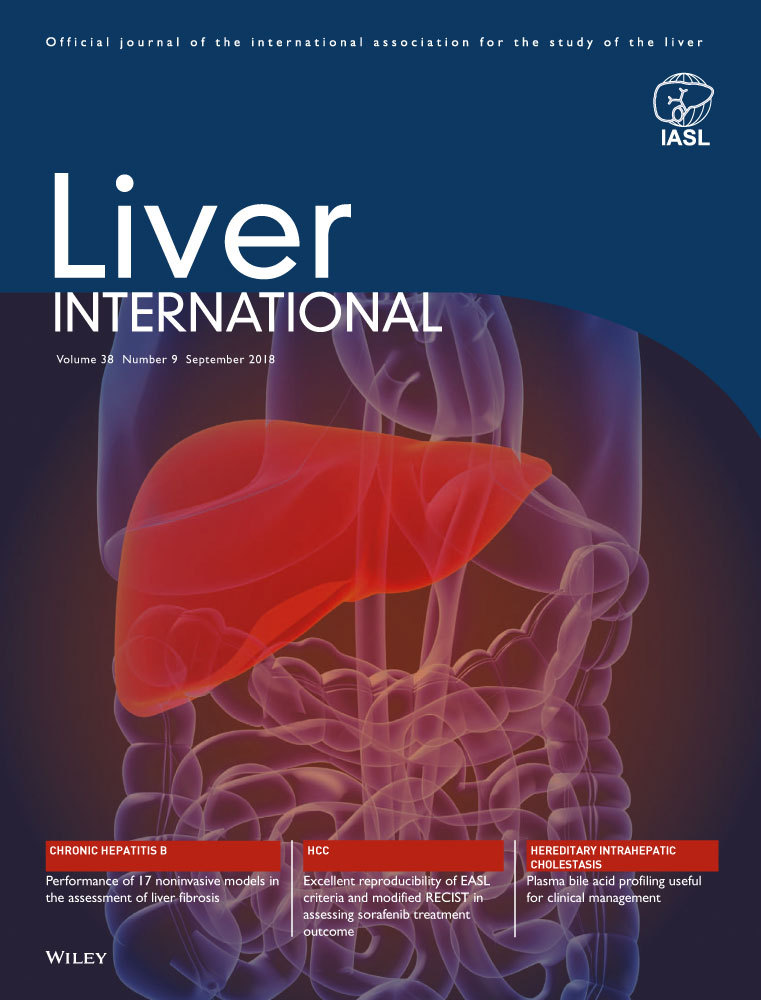Clinical and prognostic associations of liver volume determined by computed tomography in acute liver failure
Abstract
Background
Liver volume (LV) can be non-invasively determined from the analysis of computed tomography (CT) images, and in patients with acute liver injury (ALI) or failure (ALF), it can reflect the balance of structural collapse with hepatic regeneration. We examined its relation to cause of liver injury, measures of liver function and histopathological findings, and utility in prediction of complications and mortality.
Methods
Two hundred and seventy-three patients with ALF/ALI admitted to a specialist intensive care unit were studied. One hundred and ninety-nine patients (73%) had non-acetaminophen (NA) aetiologies and 74 (27%) had acetaminophen-induced disease. LV and proportion of predicted LV (PLV%) were determined from admission CT imaging.
Results
LV and PLV% showed marked variation when aetiologic groups were compared (P < .0001), including loss in cases with indeterminate cause (LV 939 cm3 [IQR 680-1259], PLV% 56% [42-84]) and increase in Budd-Chiari syndrome (1891 cm3 [1601-2094], 121% [111-131]). Progression to high-grade encephalopathy was more common with smaller LV and PLV. A < 1000 cm3 threshold identified NA patients who later developed it with 93% (95%CI 83-98) specificity and odds ratio 10.6 (3.3-34.5) at median 5 days prior to onset, and risk of death in those with NA-drug-induced (DILI) or indeterminate disease with 91% (71-99) specificity and 63% (50-75) sensitivity.
Conclusion
In patients with ALF/ALI, LV shows marked variation by the cause of disease, and in prognostic importance. In indeterminate and DILI cases, loss of volume to <1000 cm3 may indicate irreversible liver injury and regenerative failure and serve as an early clinical predictor for the development of high-grade encephalopathy and death.
CONFLICT OF INTEREST
The authors do not have any disclosures to report.




